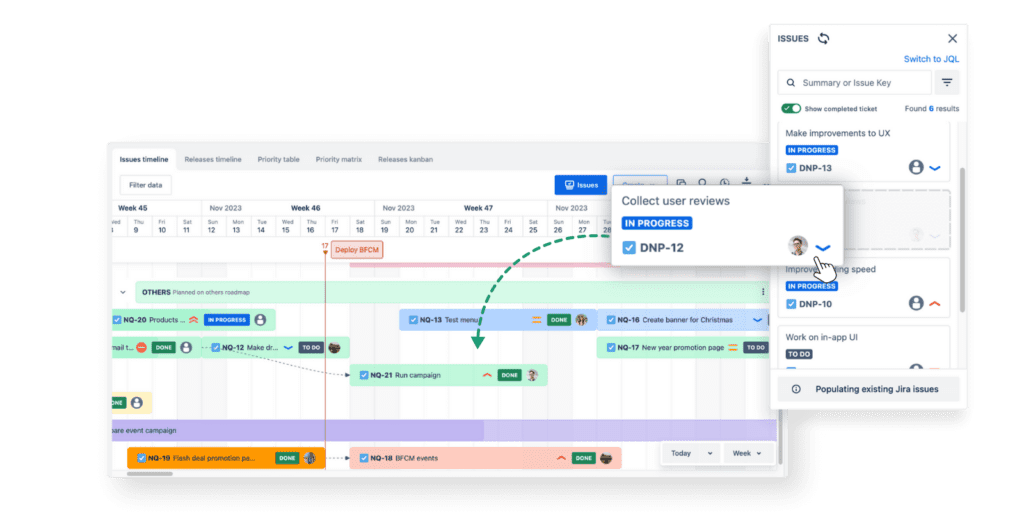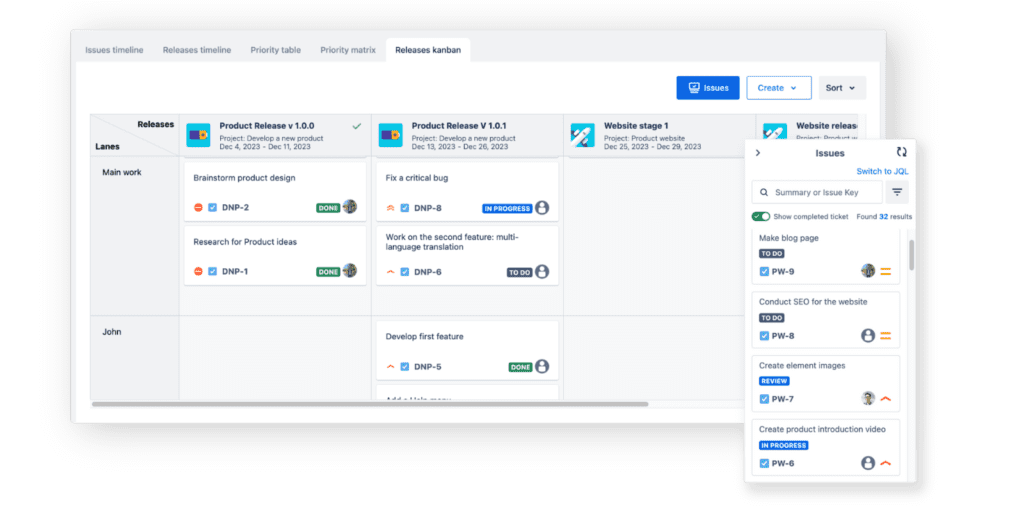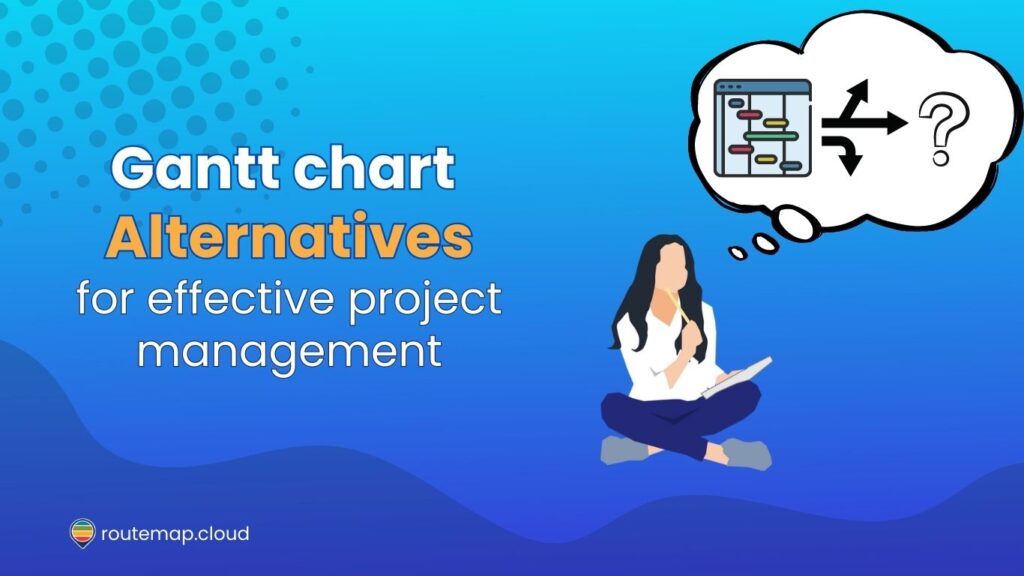Gantt charts have long been a go-to tool for visualizing project timelines and tasks. However, project managers are approaching more Gantt chart alternatives as projects become more complex and diverse.
In this blog, we’ll dive into what a Gantt chart is, its key features, and explore some powerful alternatives that can elevate your project management.
Table of Content
What is a Gantt chart?
Before we can start, let’s take a moment and recall what a Gantt chart means.
1. Definition
A Gantt chart is a popular project management tool that visually represents the schedule of tasks and activities required to complete a project. It provides a timeline view of the project’s various activities, showing when they should start, when they should finish, and how they overlap with each other.
Moreover, Gantt charts provide an intuitive and easy-to-understand visualization of project schedules. As a result, stakeholders can easily comprehend the project’s progress and identify potential bottlenecks.
Additionally, they help project managers make informed decisions about resource allocation, identify critical paths, and adjust schedules when needed.
Nowadays, Gantt charts are widely used in project planning and tracking, helping project managers and teams stay organized and manage their time effectively.
2. Key features
You might be wondering, what exactly makes Gantt charts a go-to option for project managers. For that reason, we will need to look at its key features:
- Taskbars: Each task is represented by a horizontal bar on the chart. The length of the bar corresponds to the duration of the task.
- Timeline: The chart typically has a horizontal axis representing time, often broken down into days, weeks, or months.
- Task dependencies: Gantt charts show dependencies between tasks, indicating which tasks must be completed before others can start.
- Milestones: Important project milestones are often highlighted on the chart to mark significant achievements or deadlines.
- Resource allocation: Some advanced Gantt charts also display resource allocation, indicating which team members are assigned to specific tasks.
As you can see, Gantt charts assist project managers in effective planning, organizing, and tracking of projects by leveraging these key features. Besides, they also contribute to improved project success and timely completion.
8 Gantt chart alternatives you should try
Besides Gantt charts, there are other tools that can help project managers get their job done. It depends on different or specific needs and the requirements of a project itself.
If you or your project belong to that niche, you can opt for these Gantt chart alternatives for a more appropriate approach.
1. Agile project management tools
Agile methodologies, such as Scrum, rely on specialized project management tools that focus on iterative and incremental development. These tools typically include features like backlog management, sprint planning, and burndown charts.
At the moment, you can utilize some excellent agile project management tools like Routemap, ProductGo, and many more to effectively manage your work. Especially, these tools will come in handy when you also want to create advanced roadmaps for Jira.

2. Kanban boards
Kanban boards are visual task management tools that use columns to represent stages of work (for example, “To Do,” “In Progress,” “Done“). Meanwhile, tasks are represented as cards that move across the board as they progress.

Kanban boards are great for visualizing workflow and managing tasks in an agile and flexible manner. Not only that, if you are working on the Atlassian platform, Kanban for Jira can become an ideal way to visualize your tasks and manage releases systematically.
3. PERT charts
Program Evaluation and Review Technique (PERT) charts are used to visualize the dependencies and critical path of a project. PERT charts use nodes and arrows to represent tasks and their relationships.
As a result, this allows project managers to identify the longest path and potential bottlenecks.
4. Mind maps
Mind maps are hierarchical diagrams that help brainstorm ideas and plan tasks. They are useful for capturing and organizing information, making them a good starting point for project planning and outlining.
Did you know?
You can make your own mind maps and insert them into your Confluence page or Jira easily by using Mocky.
5. Critical Path Method (CPM)
The CPM is a technique that identifies the sequence of tasks with the longest duration, determining the minimum time needed to complete the project. It is particularly useful for projects with complex dependencies and tight schedules.
6. PERT/CPM Hybrid chart
This combines elements of both PERT charts and CPM to leverage their strengths and provide a comprehensive view of the project schedule and dependencies.
7. Visual Timeline tools
These tools offer simplified visual timelines without the complexities of a full Gantt chart. They are suitable for smaller projects or those where a simple representation of time-based events is sufficient.
8. Work Breakdown Structure (WBS)
WBS is a hierarchical representation of a project’s deliverables and tasks, breaking down the project into manageable components. While it’s not a direct alternative to Gantt charts, it can be a helpful precursor in the planning process.
Remember that each alternative has its advantages and is best suited for specific project types and management styles. Besides, project managers can choose the one that aligns best with their needs and preferences.
Additionally, many project management software tools offer a combination of these features, allowing users to switch between different views depending on their requirements.
Conclusion on Gantt chart alternatives
While Gantt charts have been an invaluable project management tool for decades, there is no one-size-fits-all approach to managing projects effectively. Depending on project complexity, team dynamics, and management preferences, different alternatives can offer valuable perspectives and insights.
By exploring and integrating these Gantt chart alternatives into your project management arsenal, you can enhance collaboration, increase efficiency, and deliver successful projects. The key is to select the right tool for the right project, empowering your team to navigate through the challenges of modern project management with confidence.






